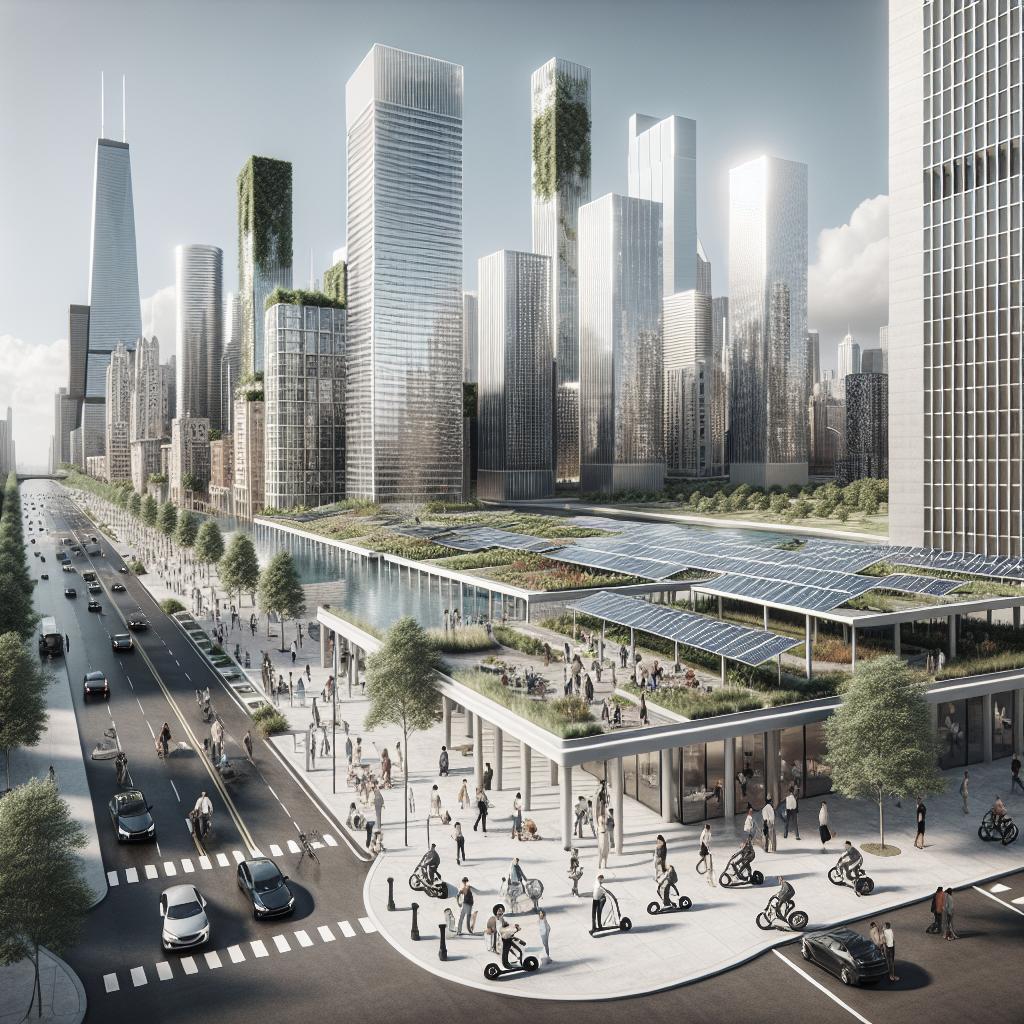<>
Urban development is evolving rapidly, driven by technological advancements, economic shifts, and changing social dynamics. From the rise of co-living spaces popular among urban Millennials to the trend of hybrid, multi-functional urban areas, cities are transforming in ways we could hardly imagine a decade ago. Another emerging trend is the involvement of private corporations in city-making, leading to the creation of branded future cities. Organizations have a unique opportunity to co-shape these future urban landscapes. This blog post will explore the colliding phenomena influencing urban development, such as co-living, hybrid construction, and the privatization of cities, and propose ways for organizations to play a pivotal role in shaping the cities of tomorrow.
URBAN MILLENNIALS AND THE RISE IN CO-LIVING
The concept of co-living has gained significant traction, especially amongst urban Millennials. These shared living spaces offer flexible and affordable housing options that cater to the needs of the younger population. Often equipped with communal areas such as kitchens, living rooms, and coworking spaces, co-living fosters community spirit and addresses the isolation that urban life can sometimes bring. The appeal of co-living extends beyond cost-saving; it’s about the lifestyle experience. Millennials are gravitating towards spaces that provide a blend of privacy and community, coupled with the convenience of flexible lease terms and the technological integrations that make life easier. The phenomenon is reshaping urban housing markets and pushing developers to think differently about residential design and amenities.
THE FUTURE OF URBAN LIFE IS HYBRID AND MULTI-FUNCTIONAL
As urban populations grow and work-life dynamics evolve, hybrid and multi-functional spaces are becoming the blueprint for future cities. These spaces integrate residential, commercial, and recreational uses within single complexes or neighborhoods, creating vibrant communities where people can live, work, and play without long commutes. The pandemic has accelerated this trend, highlighting the need for adaptable environments that can quickly shift between functions. For instance, offices can convert into coworking spaces, while residential areas might feature small business units. This flexibility not only maximizes space utilization but also accommodates a diverse range of activities and lifestyle needs.
BRANDED FUTURE CITIES: PRIVATE CORPORATIONS BECOME CITY MAKERS
Private corporations are increasingly stepping into urban development, branding entire cities as part of their forward-looking strategies. Tech giants like Google and Microsoft have launched ambitious projects to create high-tech, sustainable urban areas that serve as living labs for innovation. These branded future cities are not just about advanced technology; they also focus on sustainability and quality of life. Corporations are investing in green infrastructure, smart grids, and other environmental solutions to build cities that are not only efficient but also resilient and enjoyable. This trend marks a significant shift in the traditional model of urban development, where private entities play a crucial role in shaping public infrastructure and services.
HOW CAN YOUR ORGANISATION CO-SHAPE THE FUTURE CITY?
Organizations have a remarkable opportunity to contribute to the development of future cities. By partnering with local governments and communities, companies can co-create urban spaces that align with their values and business objectives. This collaborative approach ensures that developments are both innovative and community-friendly. Companies can also invest in research and pilot projects to test new urban solutions. Whether it’s smart traffic management systems, sustainable energy solutions, or innovative housing models, businesses can lead in experimenting with ideas that could shape the future urban landscape. Engaging in public policy advocacy to support infrastructure investments and urban planning can further solidify an organization’s role in urban development.
THE COLLIDING PHENOMENA
The trends in urban development are the result of colliding phenomena, where technology, social change, and economic factors intersect. The rise in co-living, hybrid buildings, and city branding by private corporations are not isolated developments; they are interconnected trends driven by a shared need for flexibility, sustainability, and improved quality of life. Understanding these interdependencies is crucial for stakeholders in urban development. As cities continue to evolve, the ability to recognize and leverage the synergies between these trends will become a defining factor in creating successful urban environments.
CO-LIVING
Co-living represents a seismic shift in the way we think about urban housing. It offers a solution to many of the challenges faced by modern cities, including affordability, isolation, and sustainability. By creating shared spaces that foster community, co-living addresses the growing desire for connectivity in an increasingly digital world. Moreover, co-living spaces often come with eco-friendly features and smart home technologies, reflecting a broader trend towards sustainability. For developers and urban planners, co-living presents an opportunity to rethink housing in a way that is both cost-effective and aligned with contemporary lifestyles.
HYBRID CONSTRUCTION AND BUILDINGS
PRIVATISATION OF CITIES The privatization of cities, where corporations play a leading role in urban development, is a double-edged sword. On one hand, it brings in much-needed investment and innovation, leading to the creation of advanced, well-maintained urban spaces. On the other hand, it raises concerns about accessibility, equity, and the potential for corporate dominance in public life. To balance these outcomes, it is essential for private developers to work closely with public authorities and communities. Transparent governance and inclusive decision-making processes will be key to ensuring that such developments benefit all city residents and not just a privileged few.
| Aspect | Key Points |
|---|---|
| Urban Millennials and Co-living | Flexible, affordable housing with community spirit and technological integration. |
| Future of Urban Life | Hybrid and multi-functional spaces that integrate residential, commercial, and recreational uses. |
| Branded Future Cities | Private corporations investing in high-tech, sustainable urban areas. |
| Organizational Role | Collaboration with local governments and communities; investment in research and pilot projects. |
| Colliding Phenomena | Intersection of technology, social change, and economic factors in urban development. |
| Co-living | Addressing affordability, isolation, and sustainability in urban housing. |
| Hybrid Construction | Optimizing land use with multifunctional buildings and sustainable technologies. |
| Privatization of Cities | Balancing investment and innovation with accessibility and equity. |
By continuing to analyze these trends and foster collaborations, we can ensure that the development of urban areas keeps pace with the evolving needs and desires of their inhabitants, leading to more livable, sustainable, and innovative cities.


